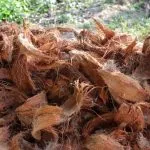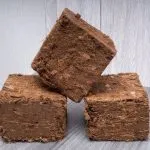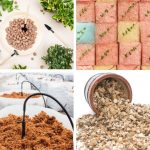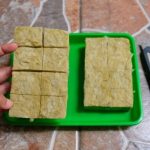As a hydroponic enthusiast, you might be curious about the properties of coco coir and whether it has nutrients to support plant growth. Coco coir, a natural byproduct of coconut husks, is a popular alternative to traditional soil-based growing mediums, offering a range of benefits for hydroponic systems. Now, does coco coir have nutrients? Let’s delve into the topic.
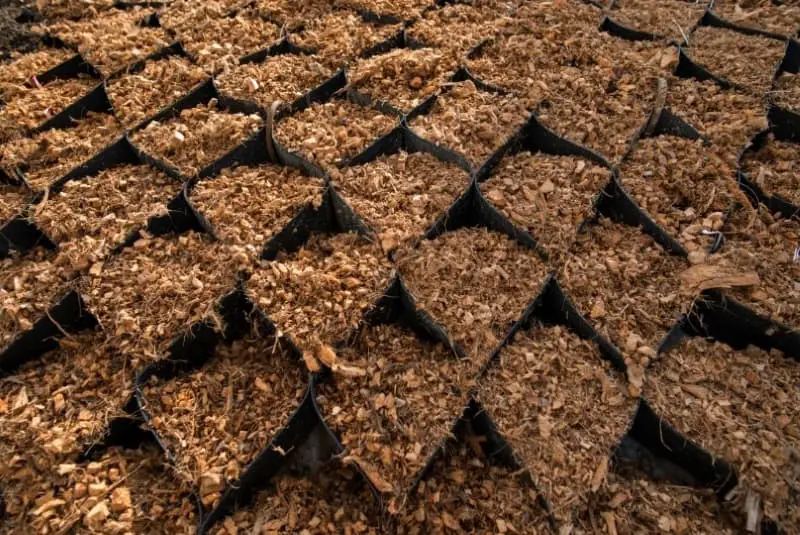
Coco coir is known for its excellent water retention, aeration, and drainage properties, which make it an ideal growing medium for your plants. While coco coir does contain some naturally occurring nutrients, primarily phosphorus and potassium, it is not sufficient to meet the total nutrient needs for plant growth. Plants in hydroponic systems using coco coir as a medium will typically require additional fertilizers to achieve optimal health and growth.
In these hydroponic systems, providing a nutrient-rich solution tailored to the specific needs of your plants is crucial. It ensures that the roots can easily uptake the nutrients they need while growing in coco coir. This approach allows for faster growth rates, increased control over plant nutrition, and ultimately, an improvement in overall plant health.
- Nutrient Profile of Coco Coir
- Fundamentals of pH in Coco Coir
- The Role of Coco Coir in Water Management
- Understanding the Relationship Between Coco Coir and Other Components
- The Inert Nature of Coco Coir
- Coco Coir, Salts and Plant Growth
- Significance of Coco Coir in Root Development, Big Yields, and Flowering
- Best Nutrients for Coco Coir
Nutrient Profile of Coco Coir
Coco coir is a popular growing medium, and it does contain some nutrients that are essential for healthy plant growth. In this section, you’ll learn about coco coir nutrient content and its role in supporting plant development.
Phosphorus and potassium are two significant nutrients found in coco coir. Phosphorus plays a critical role in your plants’ root development and flowering, as well as energy transfer within the plant. Meanwhile, potassium works to regulate metabolism in your plants and helps maintain water balance within and outside of plant cells.
In addition to phosphorus and potassium, coco coir also contains trace amounts of other essential nutrients, including:
- Iron: Important for chlorophyll production and nutrient uptake
- Calcium: Essential for cell walls, root development, and metabolic processes
- Magnesium: A component of chlorophyll and a catalyst for several enzymatic reactions
- Nitrogen: Vital for facilitating photosynthesis and promoting vegetative growth
- Copper: Required for enzyme activity and the production of certain proteins
- Manganese: Involved in the production of enzymes and necessary for photosynthesis
- Zinc: Helps regulate the carbohydrate and protein production in your plants
Keep in mind that while coco coir contains these nutrients, the amounts are not sufficient for optimal plant growth. Therefore, supplemental fertilizer for coco coir might be necessary, especially for demanding crops. Be sure to monitor nutrient levels in your growing medium and adjust as needed to ensure your plants receive all the essential nutrients for healthy growth.
Coco coir’s ability to retain water and provide proper drainage, combined with its nutrient profile, makes it a valuable addition to your garden. Remember to stay attentive to your plants’ nutrient requirements and provide additional nutrients as needed to keep your plants thriving in coco coir.
Fundamentals of pH in Coco Coir
When growing plants in coco coir, it’s essential to understand the importance of pH in your growing medium. The pH level determines the acidity, alkalinity, or neutrality of the medium, and it significantly affects the health and yield of your crops. In coco coir, the optimal pH range is between 5.5 and 6.5, providing a neutral growing environment for your plants.
Having the appropriate pH level in coco coir ensures that your plants can properly absorb the nutrients they need to thrive. When the pH is too high or too low, the availability of some nutrients may decrease, leaving your plants deficient in essential elements. Maintaining a neutral pH in coco coir allows for optimal nutrient availability and absorption.
Unlike peat moss, which is acidic with a pH level between 3.3 and 4, or Rockwool with a basic pH, coco coir offers a neutral pH between 5.2 and 6.8. This eliminates the need for treatment with lime, saving you extra effort in adjusting the pH of your medium. Coco coir’s natural pH properties make it an excellent choice for growing a wide range of plants.
To maintain a consistent pH in your coco coir, it’s important to regularly monitor the medium’s pH level and adjust it accordingly. Mixing water with a balanced pH is essential, as the quality of water can greatly impact the pH of coco coir. Investing in a reliable pH meter and pH up/down solutions can help you manage the pH in your growing medium more effectively.
The Role of Coco Coir in Water Management
Coco coir is an excellent medium for managing water in your gardening projects. Its unique composition provides a balance between water retention and drainage, ensuring your plants always have access to fresh water without the risk of root rot.
One of the main benefits of coco coir is its ability to retain water. This means your plants will always have a consistent supply to absorb nutrients and grow healthily. Moreover, coco coir can also prevent overwatering, making it ideal for hydroponics.
Additionally, the drainage capability of coco coir shouldn’t be overlooked. While many other mediums can become waterlogged, coco coir allows excess water to drain away, preventing buildup and promoting a healthy root system.
To maximize the benefits of coco coir’s water management properties, you’ll need to know how often to water plants in coco coir because it dictates the nutrient feeding schedule. By consistently monitoring and adjusting feeding and watering schedules based on your plant’s needs, you can help them thrive in a coco coir environment.
So, not only does coco coir offer excellent water retention and drainage, but it can also help establish a proper feeding schedule for your plants in a friendly and efficient manner. With these qualities in mind, you can feel confident about your decision to use coco coir as your go-to choice for water management.
Understanding the Relationship Between Coco Coir and Other Components
You might be wondering how coconut coir relates to other components such as peat moss, perlite, Rockwool, fertilizers, and hydroponic nutrients. Let’s discuss these components briefly and their relationship with coco coir when mixed together in hydroponic systems.
First, let’s compare coco coir with peat moss. Both of these materials are used as soil amendments to improve soil structure, water retention, and aeration. While peat moss is an organic material derived from decomposed plants in peat bogs, coco coir comes from the fibrous outer husk of coconuts. One advantage of using coco coir instead of peat moss is that it’s more sustainable and eco-friendly since it’s a byproduct of the coconut industry.
Now, let’s talk about perlite. Perlite is an inorganic substance made from volcanic rock that has been heated to high temperatures, causing it to expand and become lightweight. Just like coco coir, perlite is added to soil mixes to improve drainage and aeration. You can use coco coir and perlite together to create a well-draining, oxygen-rich growing environment for your plants.
Rockwool, on the other hand, is an inorganic material made from melted rock fibers. It’s commonly used in hydroponic systems as a growing medium since it retains water well and provides good aeration. While both coco coir and Rockwool offer similar benefits as growing media, you might prefer coco coir if you’re looking for a more environmentally friendly option.
In terms of fertilizers and hydroponic nutrients, it’s important to note that coco coir is not a natural source of nutrients for plants. However, its ability to hold water and nutrients makes it an ideal medium to mix with fertilizers and hydroponic nutrients, allowing your plants to take in the necessary elements for growth more effectively.
Finally, let’s discuss compost. Compost is an organic material made from decomposed plant and animal materials. It’s widely used as a soil amendment to improve soil structure and provide nutrients to plants. You can mix coco coir with compost to create a rich, well-draining growing medium that supplies your plants with the nutrients they need while also enhancing their overall growth and health.
In summary, coco coir is a versatile and environmentally friendly growing medium that works well with other components like peat moss, perlite, Rockwool, fertilizers, hydroponic nutrients, and compost. By understanding their relationship and combining them as needed, you can create an optimal environment for your plants to thrive.
The Inert Nature of Coco Coir
Coco coir is an excellent growing medium due to its inert nature. Being inert means it doesn’t have any significant amounts of nutrients that are essential for plant growth. This coco coir aspect allows you more control over your garden, as you can choose the precise nutrient supplements you want to add.
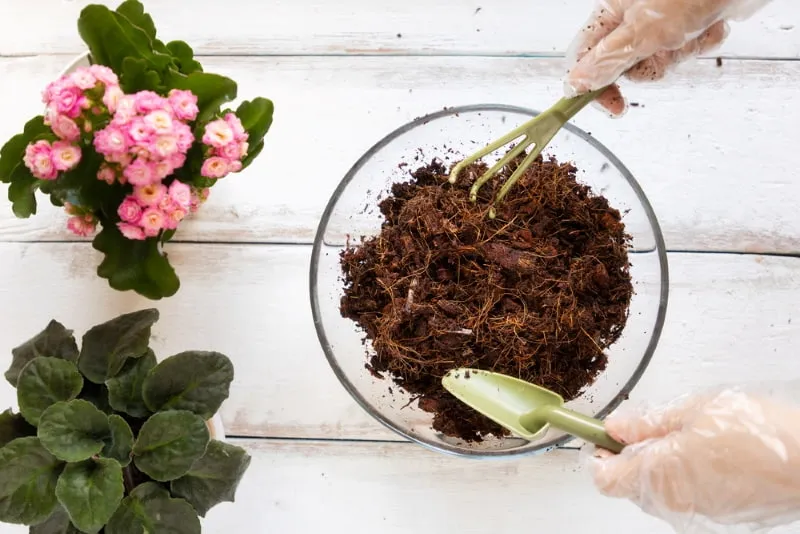
Unlike peat bogs, which can be nutrient-rich, coco coir doesn’t have that vast supply of minerals and organic matter. But don’t worry, this aspect only gives you a blank canvas to create the perfect environment for your plants.
For many plants, coco coir’s lack of nutrients requires you to add supplements such as calcium and magnesium. These elements are essential to promote healthy growth, and since coco coir doesn’t have them naturally, it’s up to you to include them in your gardening regimen.
In addition to supplementing nutrients, you may want to adjust coco coir’s water-retention properties. Because it’s highly water-retentive, some gardeners mix it with perlite or expanded clay balls to further improve drainage.
Remember, hydroponics with coco coir gives you the power to customize your garden’s environment while enjoying its many other benefits, such as excellent aeration and drainage, that make it a fantastic growing medium. So go ahead and unleash your creative abilities in nurturing your plants with the help of coco coir’s inert nature.
Coco Coir, Salts and Plant Growth
Coco coir is a popular growing medium for various plants. However, it is essential to be aware of its salt content and how it may impact your plants’ growth. High salt content in coco coir, specifically sodium nitrate and chlorine, may have detrimental effects on plant growth as it can cause salt buildup in the root zone. This ultimately affects the plants’ ability to take up nutrients and water.
This can happen when coconut husks are processed using saltwater soaking. To help lower these levels, a technique called buffering is applied, in which coco coir is treated with calcium nitrate. When selecting coco coir for your garden, search for brands with low salt content to ensure a healthier growing environment for your plants.
To avoid any issues with salt content when using coco coir, it is crucial to take a few steps:
- Choose high-quality coco coir: Not all coco coir products are the same. Some brands may have higher salt content than others. Opt for a high-quality coco coir that has been treated to remove excess salts.
- Flush before planting: Before planting, it is a good idea to flush the coco coir with fresh water to remove any residual salts. This will help ensure a healthier environment for your plants to grow.
- Monitor and adjust watering: To avoid salt buildup in the root zone, monitor your plants closely and adjust your watering schedule as needed. Ensure you are not overwatering or underwatering, as both can lead to an accumulation of salts.
In conclusion, while coco coir is a beneficial growing medium, it is essential to be mindful of the potential issues with high salt content. By choosing high-quality coco coir, flushing before planting, and monitoring your watering, you can help create the ideal environment for healthy plant growth.
Significance of Coco Coir in Root Development, Big Yields, and Flowering
Coco coir is an excellent growing medium for your plants, offering numerous benefits for root development, flowering, and increased yields. As a friendly reminder, here are some of the main advantages when it comes to using coco coir in your garden:
Root Development: Coco coir promotes strong root growth and plant vigor due to its excellent water holding capacity and good drainage. Its high lignin and cellulose content encourages the growth of beneficial bacteria while discouraging harmful ones. This means your plants will have a robust root system, enabling them to absorb nutrients effectively and grow well.
Big Yields: Since coco coir delivers nutrients directly to your plants during every feeding cycle and retains nutrients, you don’t have to water your plants as frequently as you would with a hydroponics system. This efficient nutrient delivery system ensures your plants get the essential elements they need, leading to bigger and more bountiful yields. If you’re wondering about coco vs rockwool yield, many growers report higher yields with coconut coir. However, the yield depends highly on the gardener’s skill, the specific growing conditions, and the exact plant species being grown. Some plants might thrive better in coco coir, while others prefer Rockwool. Experimentation can help determine what works best for your specific situation.
Flowering: Growing in coco coir creates an ideal environment for flowering thanks to its optimal pH range of 6.0-6.8. By maintaining a proper pH level and providing your plants with the right balance of nutrients, you can encourage healthier and more productive flowering.
Best Nutrients for Coco Coir
Growing your plants in coco coir can be a fantastic choice, as it offers numerous benefits such as better water retention, aeration, and nutrient delivery. However, to achieve maximum success, it’s essential to supply your plants with the right nutrients. In this section, we will discuss some of the best nutrients for coco coir.
Lignin, a complex organic polymer, is found in woody fibers of coco coir along with carbohydrates. It provides strength and structure to the coir. The combination of lignin and carbohydrates forms an ideal environment for beneficial microorganisms, bacteria, and fungi to thrive, assisting in your plant’s growth while hindering harmful bacteria.
Coco coir is known to contain natural amounts of Phosphorus and Potassium. Phosphorus plays a vital role in root development, flowering, and energy transfer within the plant, while Potassium assists in regulating metabolism and water pressure inside and outside plant cells. So remember, since coco coir naturally contains these nutrients, be sure to choose a base nutrient supplement with lower levels of phosphorus and potassium to achieve the ideal mix for your hydroponic garden.
When it comes to fertilizing plants grown in coco coir, it’s crucial to provide them with additional nutrients that target their specific needs. One key component to look for in a coco coir fertilizer is Calcium. Coco-grown plants crave lots of Calcium, and using a Cal-Mag supplement can alleviate any potential deficiency.
In addition to the essential nutrients, microorganisms within the coir require nitrogen for optimal growth. Although natural coir has a small amount of nitrogen, it’s not sufficient for creating the ideal growth environment. Therefore, your chosen nutrient base should include more nitrogen compared to traditional soil or hydroponics.
There are several nutrient brands available that cater specifically to coco coir cultivation. Some of the best coco coir nutrients include:
These brands provide an excellent balance of Nitrogen, Phosphorus, and Potassium (NPK) ratios, as well as essential micronutrients that coco coir plants require. We recommend adding CALiMagic by General Hydroponics to each of these nutrient mixes to ensure your plants get the essential Calcium and Magnesium elements.


